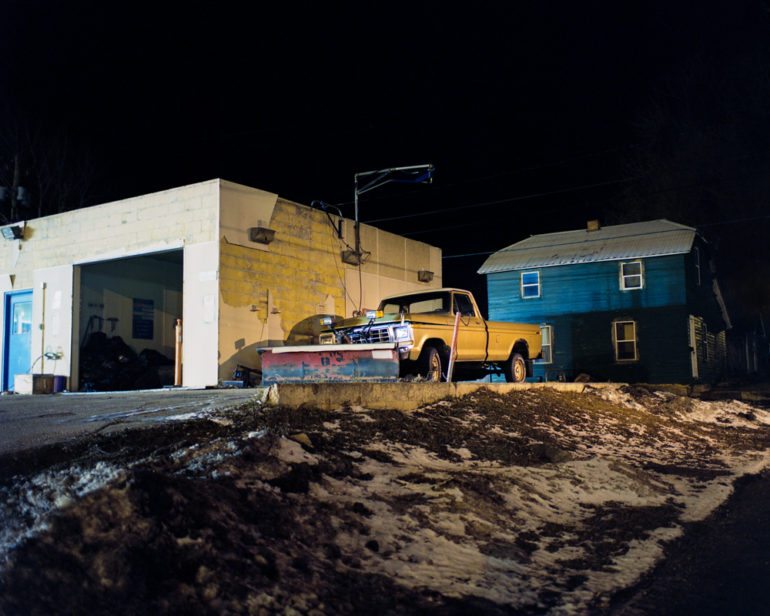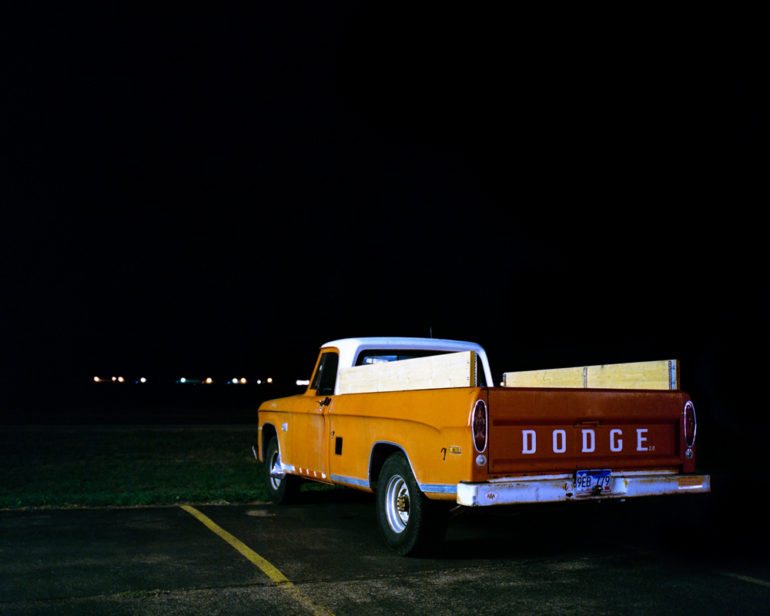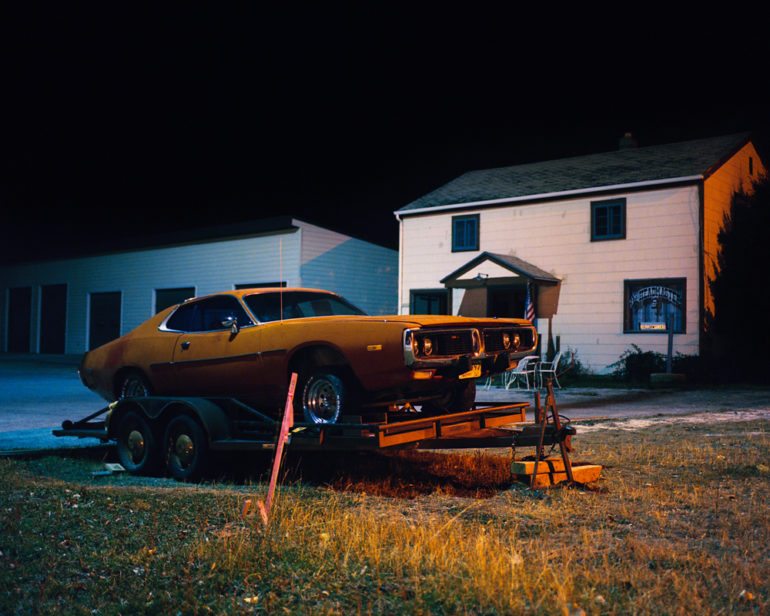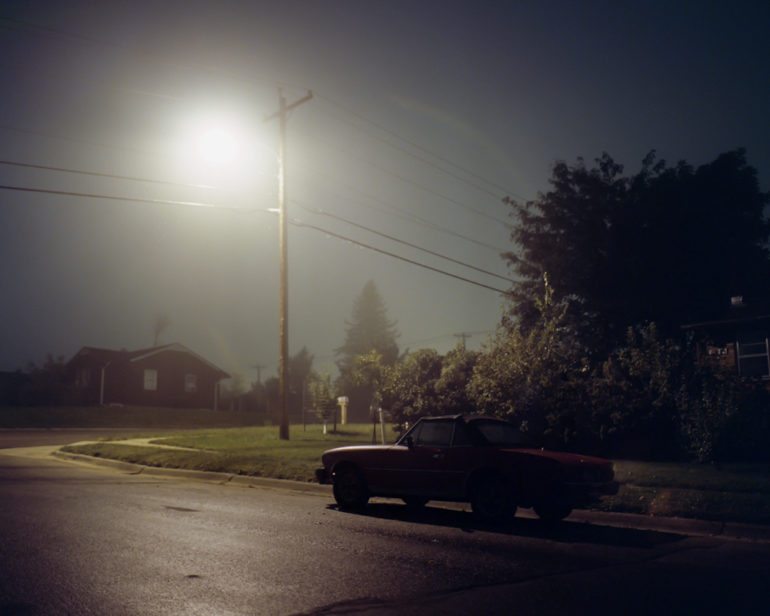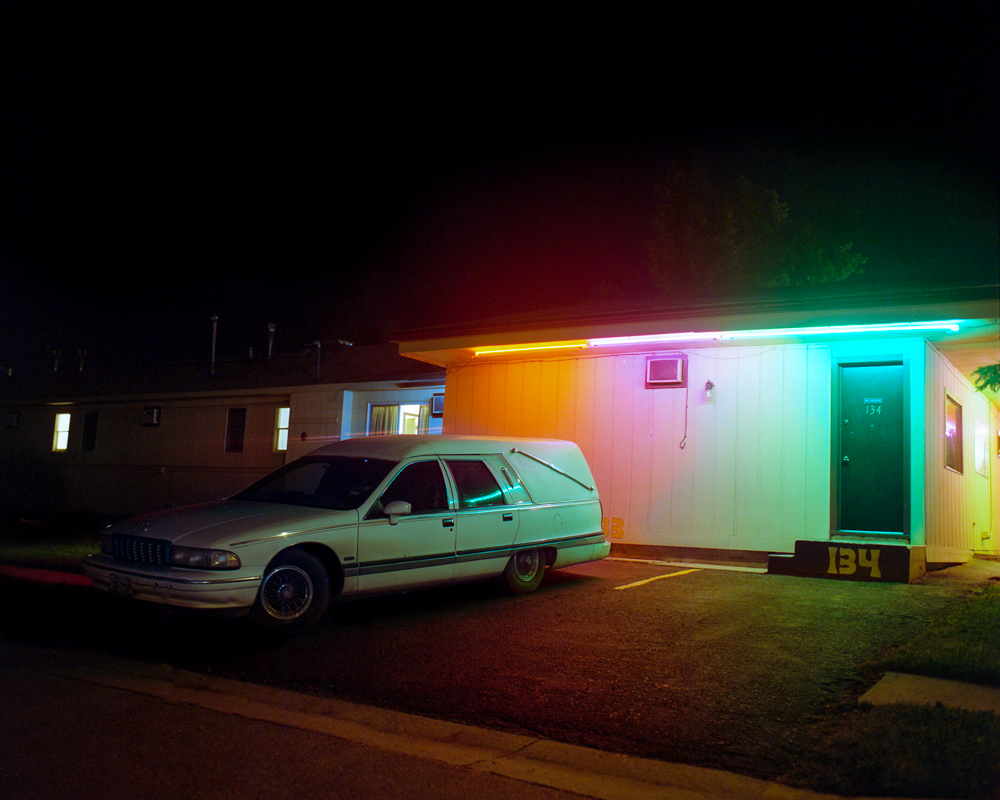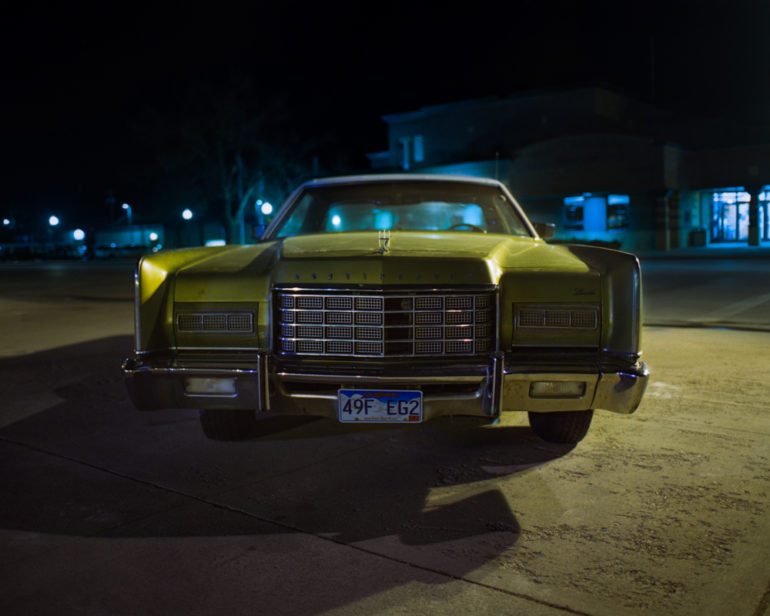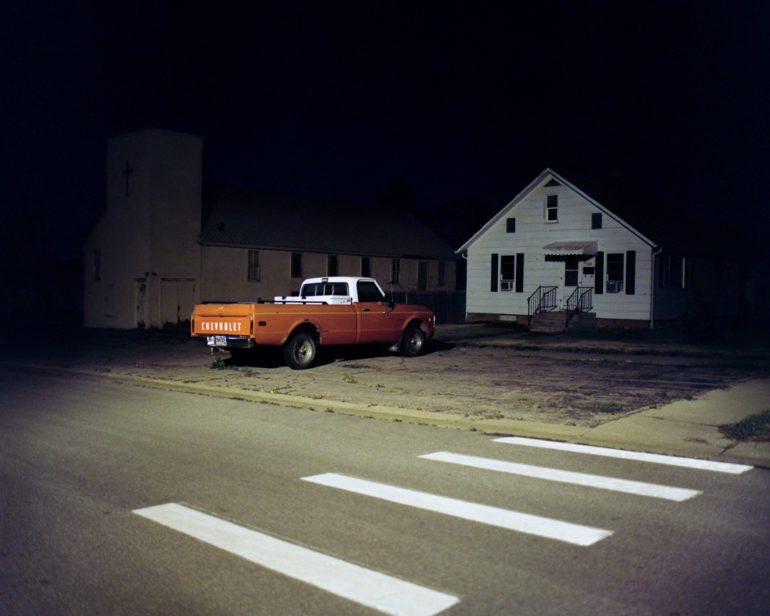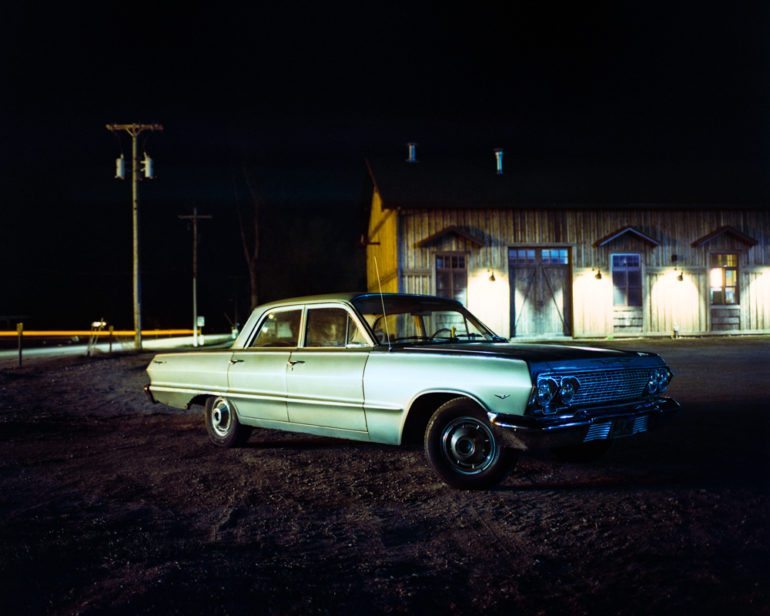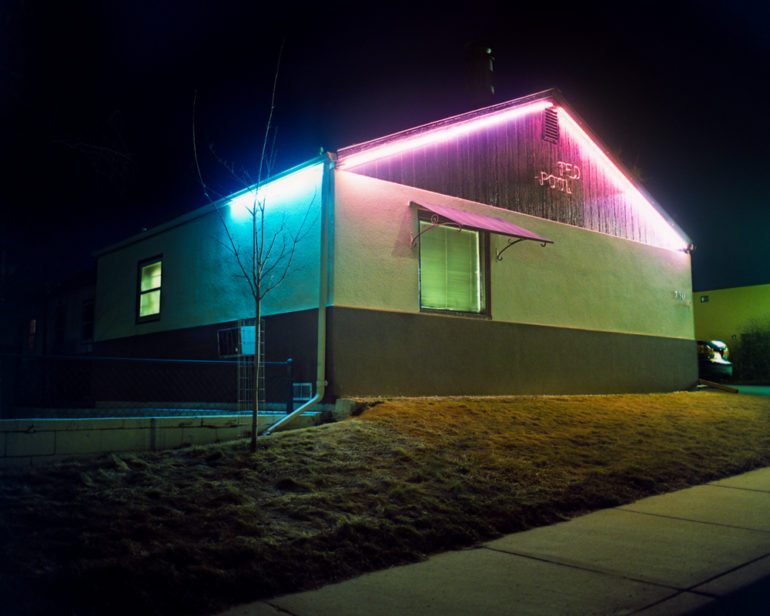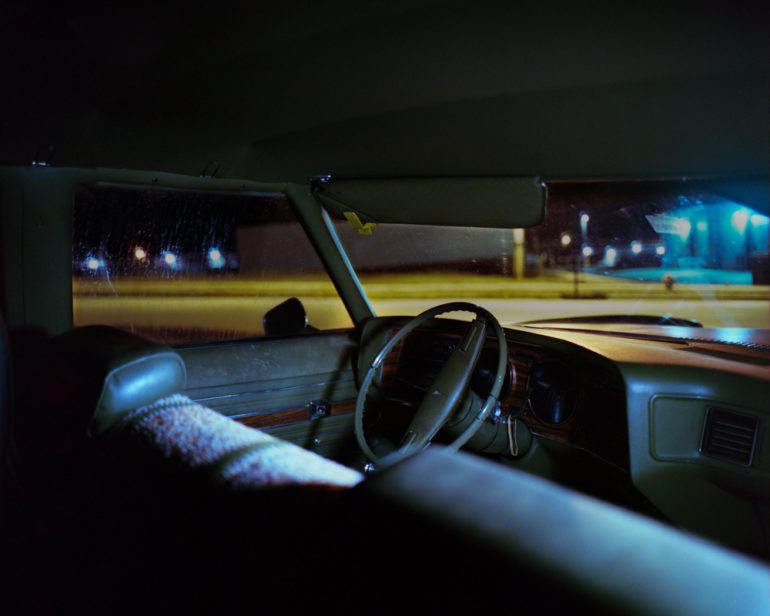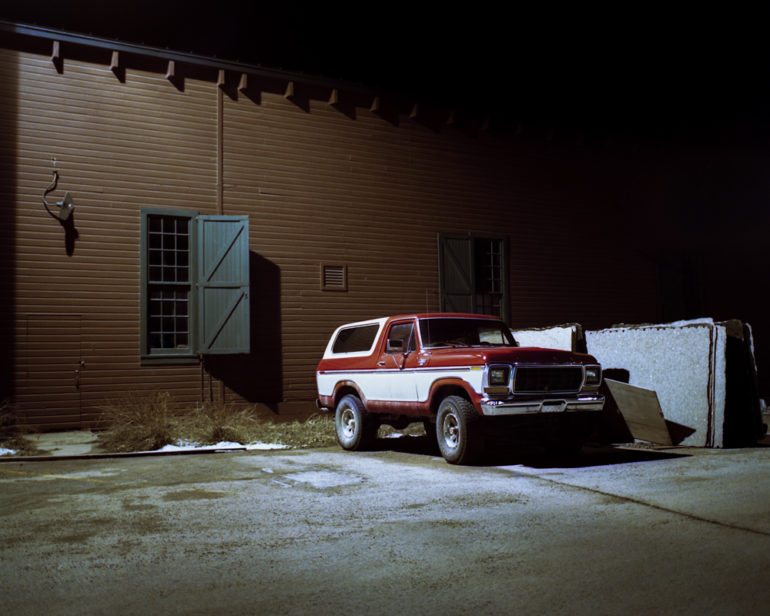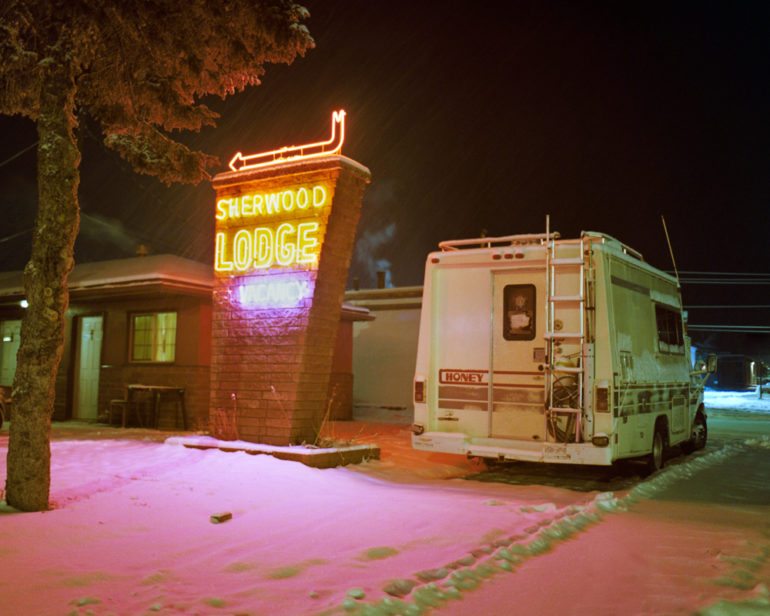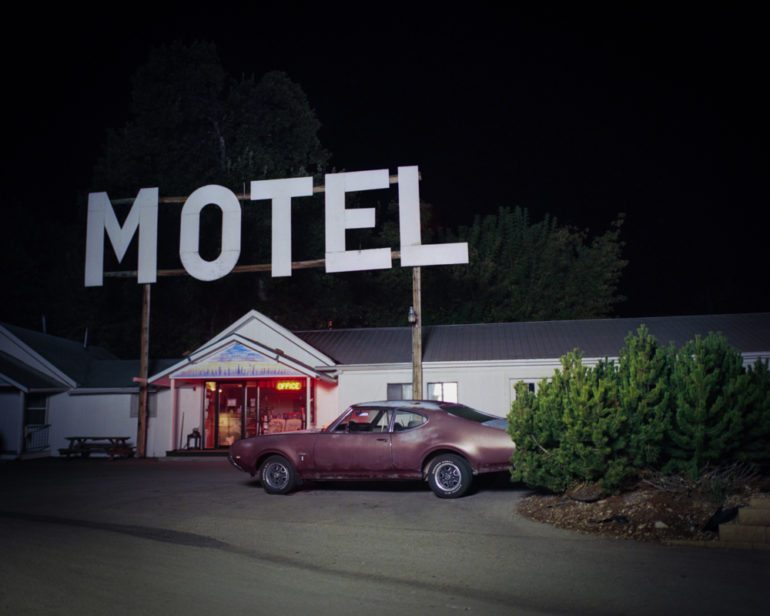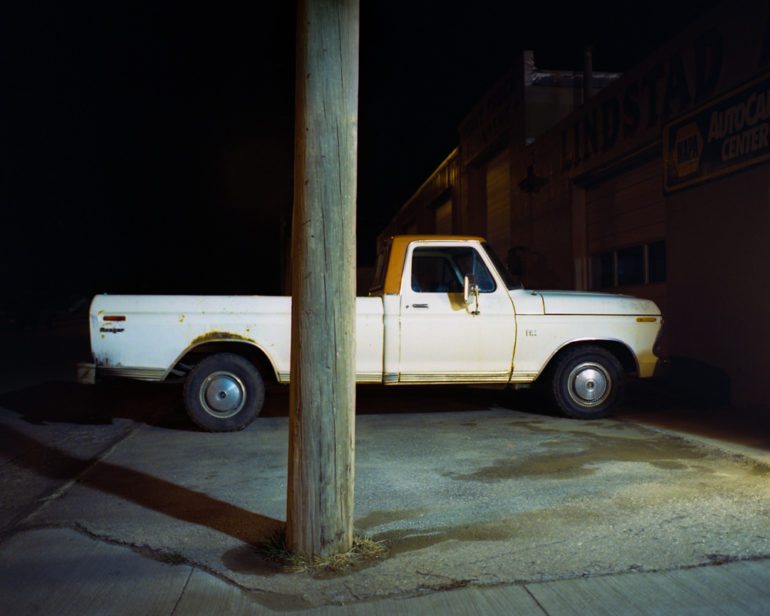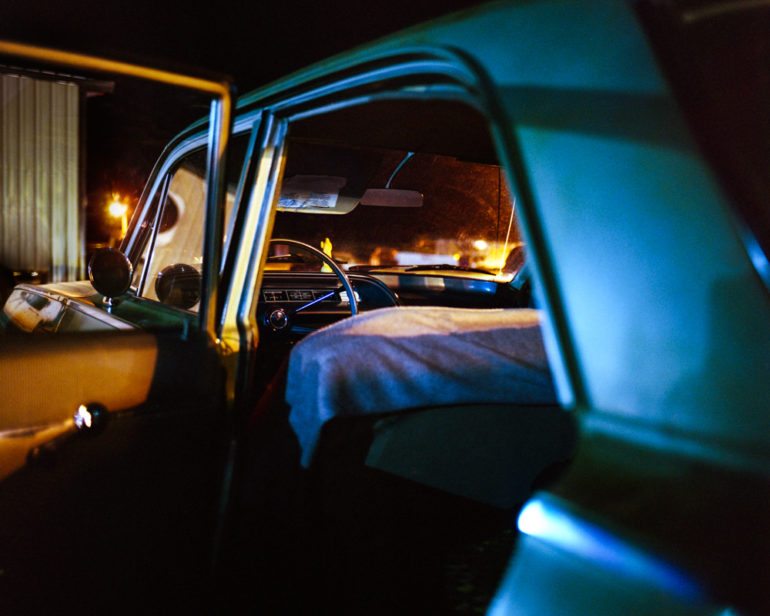Photo Essays is a series on the Phoblographer where photographers get to candidly speak their mind about a specific subject or project of theirs. Want to submit? Send them to editors@thephoblographer.com. This essay and images are by Seth Harwood and used with permission.
I am currently working my way towards my MFA in Photography. The first year was spent trying to figure out a sense of direction for my thesis work, and it was a stressful time, enlightening, but stressful. I touched on all of these different facets of my life, but nothing quite clicked. Night Owl slowly surfaced out of all these explorations. In all of these little projects I began to pull out photographs that seemed to be part of an overarching series, and when I finally made that connection,, that’s when Night Owl was born.
I had been trying to create what I thought a thesis project should look like, I didn’t realize I had the inspiration I needed so readily apparent in my past. I grew up the son of a repo man, playing in the old broke down vehicles that lined our front lawn. Night Owl is a reflection of my history with the kinesthetic vehicular landscape. It’s my attempt to capture these scenes that, if even just for a brief instant, give me that sensation of being thrown back in time, and share that sensation with the viewer.
Working with film, especially in the medium format, there is a very methodical quality that I find great enjoyment in. Plus I am very fond of its kinesthetic qualities, simple things such as loading the film, cranking the shutter advance; these little details are so very meditative for me.
Then I also enjoy the lack of instant gratification that comes with film. I don’t know if the shot will turn out until I develop the film, so I had better take the time to make sure everything is how it should be, because there is no second chances, especially with this form of subject matter. Also film is so much more forgiving with long exposures. All of the photographs in Night Owl are naturally lit, which causes for some lengthy exposures, but regardless of my exposure time I don’t have to worry about noise like I do when working digitally.
To learn the finicky art that is photographing the night I began digitally. I worked with a DSLR for about the first six months, but eventually the process began to feel a bit hollow, like I was just going through the motions. I wanted to actually find a medium that I felt was supporting the meaning behind the work. I felt film would be a good start, and so I taught myself the C-41 process and began shooting on 35mm. When working with the 35mm the process still felt a bit iterative, plus I wanted a finer quality image, something I could blow up to 40 inches across to really make the final result feel immersive. So I moved up to medium format and found exactly what I was looking for. I feel that the larger camera encourages this more deliberate approach to the vehicular landscape, but is mobile enough to keep up with the rapid environment when it needs to.
The shift from working with a DSLR to working with 645 and 67 film cameras has definitely had a tremendous shift on what subject matter I pursue, how I interact with it, and what the work means to me. When I was working with the DSLR I felt more like I was working solely to get that final product, but with film, it’s become more about the process itself. The workflow leading up to the final composition is just as important as the finished photograph. Then in terms of post processing, this transition from digital to analog has really helped me to work harder to capture, as close to what I feel would be a final composition in camera as possible. For post processing I scan the negatives into the digital darkroom and edit primarily in Lightroom, keeping any edits to an absolute minimum.
I absolutely feel film is more personal than digital, not to knock on digital though. In my opinion film has this sort of spiritual quality that I just can’t find when working with pixels. I love this idea that the image burned into the emulsion on the film is the same light that struck the scene I was photographing, where’s with digital its simply ones and zeros being sent to a processor. Then the aspect of actually developing the film is a big aspect of my appreciation for film as well. It seems many people are deterred from developing color film, but I enjoy the process, it’s very therapeutic. Plus I like to think that between shooting on film, hand developing it, and with to the little imperfections that arise throughout the process I am truly making an image that is one of a kind.
I have been on a bit of a digital hiatus for the last 18 months while working on my thesis, but recently I dusted off the DSLR and actually began trying to incorporate it into this series now that I have refined Night Owl so much. But if anything it has only reinforced my opinion that yes, it makes the work different. Night Owl is built around the unique qualities of these quirky scenes, the individuality that almost personifies these automobiles, and the one-of-a-kind scenes that develop along the roadside, and I feel films imperfect qualities compliment that in a way that digital does not. I think working digitally gives the scenes a bit of a sterilized, maybe dystopian, atmosphere that just doesn’t work for this series.
I think this sensation of nostalgia can be derived from anything that has ties to a past we actually lived in, or simply things that we wish we could have experienced, sort of like that saying about being born in the wrong decade/century. I was born in the early 90’s but I feel that sense of nostalgia and anachronistic longing for things from the 50’s, 60’s, 70’s, 80’s, pretty much anything that’s mechanical or analog. Being 24 I was primarily raised in the digital world, especially in the sense of photography, but I have an insatiable nostalgic craving for the more mechanical and analog facets of photography, even though I wasn’t around in film’s prime. So I suppose I would say no, I don’t think nostalgia is reserved solely for those who physically lived through that time.
